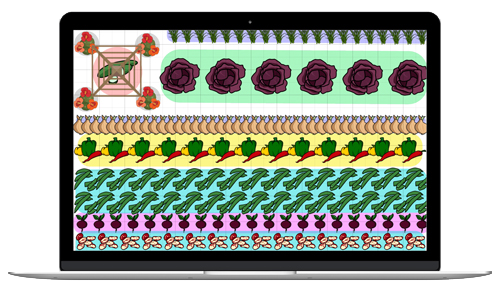
Black-eyed Susans (Rudbeckia)
Planting, Growing, and Caring for Black-eyed Susans
The Almanac Garden Planner - Use It Free for 7 Days!
Plan your 2025 garden with our award-winning Garden Planner.
Types
As well as the traditional black-eyed Susans, which grow 1 to 3 feet tall (or more), there are dwarf varieties that reach no more than 1 foot (perfect for containers). Varieties can be annual, biennial, or perennial.
The popular roadside Rudbeckia hirta with showy yellow flowers is a biennial in the wild but treated as a short-lived perennial in the garden. It self-seeds abundantly, naturalizing easily. If you sow seeds 6 weeks before the last frost date, you’ll see flowers in the first year, and they may return a few more seasons (but you can’t always count on it). Some of its many hybrids include:
- ‘Autumn Colors’: yellow, orange, red, and brown flowers; 18- to 24-inch stems
- ‘Becky Mixed’: lemon-yellow, golden-yellow, dark red, and reddish-brown flowers; 10- to 16-inch stems
- ‘Prairie Sun’: All-America Selections winner; 4- to 6-inch bright orange flowers that fade to yellow at the tips; 28- to 23-inch stems. See AAS Winning Rudbeckia varieties!
- ‘Sonora’: large golden flowers with big, chocolate-brown centers; 12- to 16-inch stems
- ‘Toto Gold’: dwarf type; classic yellow flowers with black centers; 12- to 16-inch stems; ideal for containers
There are also true, long-lasting perennials that will keep coming back and blooming year after year.
- ‘Goldsturmm’ black-eyed Susans (Rudbeckia fulgida ‘Goldstrum’), known for its longevity and a regular plant in late summer and fall gardens
- ‘Sweet’ black-eyed Susans (Rudbeckia subtomentosa), bearing taller flowers and ideal for more naturalized garden or meadow
- ’Gloriosa Daisies’ (Rudbeckia hirta ‘Gloriosa’), 12 to 36 inches tall and tolerates partial shade; giant, bi-color double flowers.
Finally, some Rudbeckia varieties are annuals, such as the Clasping Sunflower (Rudbeckia amplexicaulis), a low-growing plant for the front of a border garden.
ADVERTISEMENT
I live on the island of jamaica,where it is hot and sunny all year round.can i sow BLACK-EYED SUSANS seeds in july or early august
The deer loved my black eyed Susans this year. Ate them before they bloomed. They were beautiful last year.
I had the same problem with deer however when I planted lavendar in between each plant, the deer and bunny’s won’t come near them as they hate the smell. Now I have a yellow and purple landscape.
I plant my black eye Susan's and they die. Brown leaves and dry out I do water them every day sun shine. The thing I dont understand my neighbors grows them with no problem she splits them and gives me some but does not grow the neighbors multiple. I dont understand what can I be doing wrong. Help!
I am looking after a friends Black Eyed Susan in Spain. The leaves are yellowing at the bottom of the plant. Is this caused by over watering or something else? The plant is in full sun most of the day.
This could be a sign of overwatering; is the soil constantly wet? Does the plant sit in a puddle? If so, lift it and let it drain.
Yellow leaves could also be cause by a fungal pathogen. Let it dry out if wet and give it air, outdoors in the sun, if possible. Also, when you water, water at the base (ground or root level) of the plant, not from the top down. This condition should not be fatal to the plant but we can not say for certain.
I live in Alaska just bought a Susan and I had no Idea they grew that tall. Our growing season is short so will they go that tall here in Alaska. Wished I could get colored ones also but have not seen them here first time having one. Thank you
As noted above these plants can get to about 3 feet tall. Hard to tell how a black-eyed Susan will do in Alaska, especially as it becomes acclimated (meaning to the location, light, etc.). Give it a couple/few years to get established (remember the perennial adage: first they sleep, then they creep, then leap). There are many circumstances that might affect its growth and remember that the one you bought may have been forced to bloom and stand as tall as it is. That may/may not happen exactly the same way again. Enjoy it!
Can I grow these in Florida, zone 9a . Will they be perrinial?
Yes, nine Rudbeckia species are native to Florida and commonly grown. It’s hardy in USDA Zone 9a to -6.6 °C (20 °F). It’s a great plant, attractive to bees, butterflies and birds.
It’s a perennial in South Florida, but in North Florida and other areas of the U.S., it is grown as an annual.












